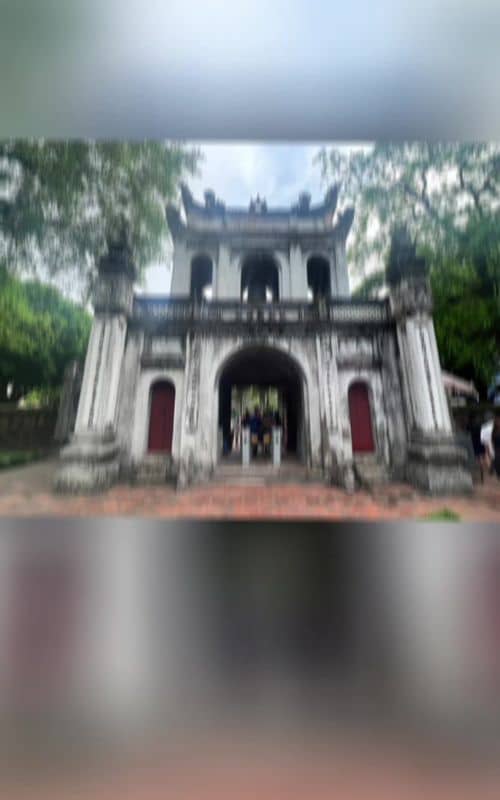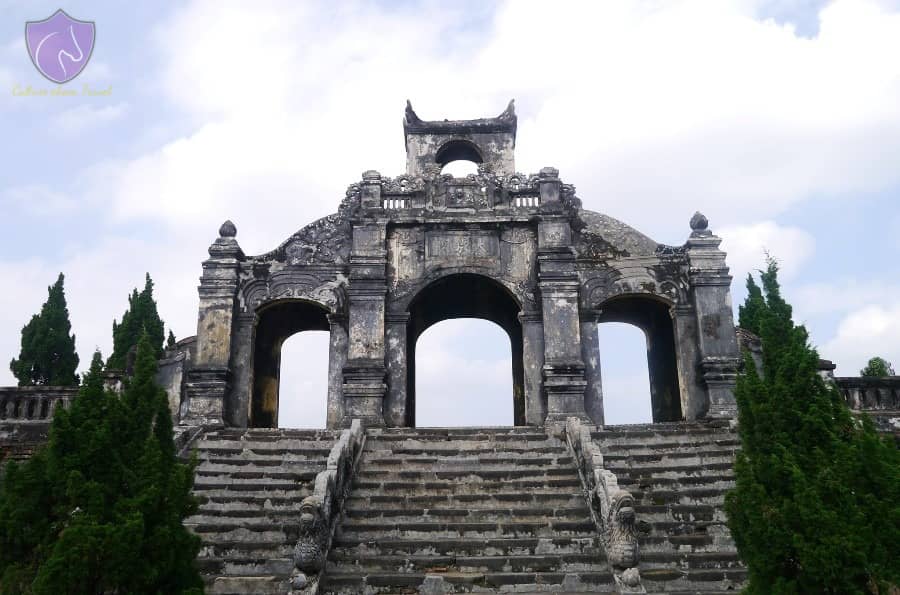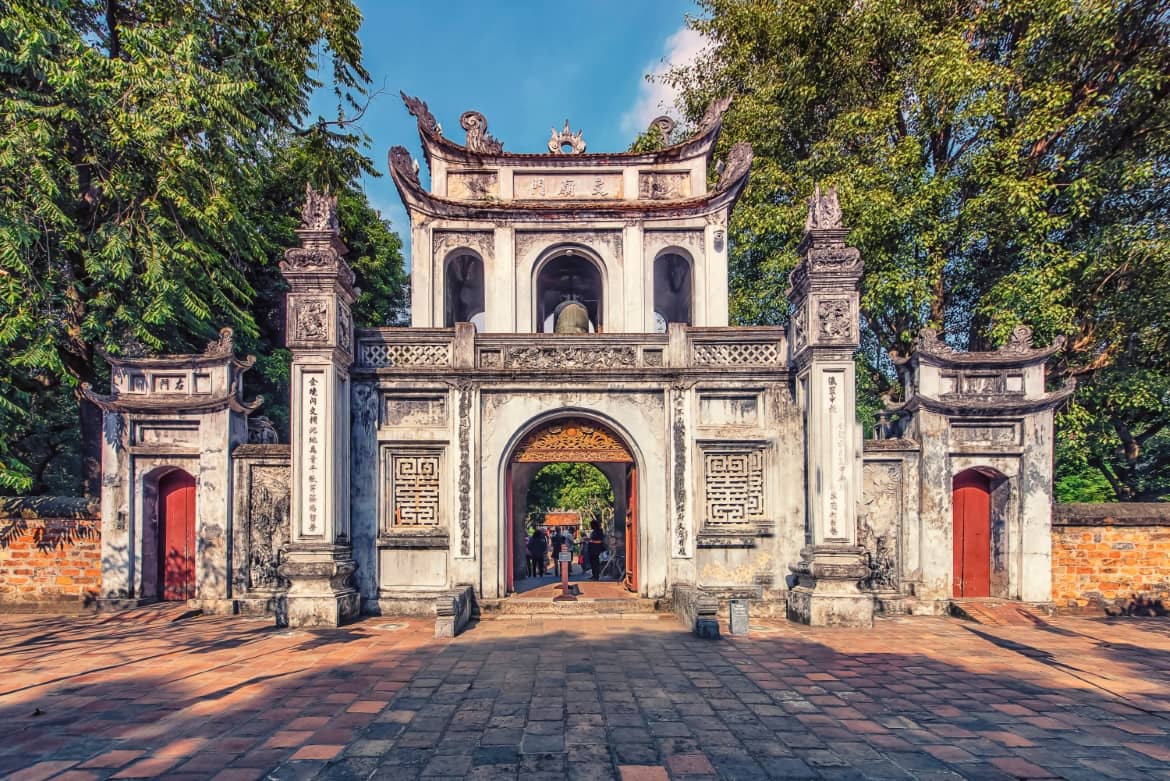Temple of Literature Hue
A tranquil, often overlooked historical site in Hue, honoring Confucius and scholars with ancient stelae and serene architecture.

Highlights
Must-see attractions

Social
From TikTok & Reddit
Best Time
Fewer crowds, more peaceful
Temple of Literature Hue
Best Time
Fewer crowds, more peaceful

Highlights
Must-see attractions
A tranquil, often overlooked historical site in Hue, honoring Confucius and scholars with ancient stelae and serene architecture.
"A quiet corner of history, offering stillness and a dignified atmosphere that invites reflection."
🤫 Seek Solitude
Visit early or on a weekday to experience the temple's profound quietness, making it a personal journey.
🐢 Spot the Turtles
Keep an eye out for the cute turtles often found on the grounds, adding a charming touch to your visit.
Highlights
Discover the most iconic attractions and experiences

Stone Stelae of Scholars
Courtyard
Admire the ancient stone tablets honoring scholars who passed imperial exams, a testament to Vietnam's intellectual heritage.

Restored Architecture
Main structures
Explore the beautifully restored traditional Vietnamese architecture, offering a glimpse into the past.

Peaceful Courtyards
Grounds
Wander through serene courtyards, a perfect place for quiet reflection and appreciating the historical ambiance.
Plans like a pro.
Thinks like you
Planning Your Visit
Embrace the Serenity
Off the Beaten Path Gem
Best Times
Insider Tips
from TikTok, Instagram & Reddit
🤫 Seek Solitude
Visit early or on a weekday to experience the temple's profound quietness, making it a personal journey.
🐢 Spot the Turtles
Keep an eye out for the cute turtles often found on the grounds, adding a charming touch to your visit.
🚶♀️ Walk from Thien Mu
It's a pleasant 10-minute walk from Thien Mu Pagoda, or you can arrange a boat ride.
📱 Scan QR Codes
Use your phone to scan QR codes for detailed historical information and translations.
Tips
from all over the internet
🤫 Seek Solitude
Visit early or on a weekday to experience the temple's profound quietness, making it a personal journey.
🐢 Spot the Turtles
Keep an eye out for the cute turtles often found on the grounds, adding a charming touch to your visit.
🚶♀️ Walk from Thien Mu
It's a pleasant 10-minute walk from Thien Mu Pagoda, or you can arrange a boat ride.
📱 Scan QR Codes
Use your phone to scan QR codes for detailed historical information and translations.
What Travellers Say
Reviews Summary
Visitors praise the Temple of Literature in Hue for its profound serenity and historical significance, often finding themselves alone in its peaceful grounds. It's appreciated as an off-the-beaten-path gem offering a quiet escape and a chance for reflection, though some note that much of the original structure is in ruins.
"When I visited, I was completely alone, which made the experience even more special. Just a few hundred meters away, the nearby pagoda was overflowing with tourists, yet here it was quiet, calm, and beautifully serene.
This temple may not appear in every guidebook, but it truly deserves more attention. The grounds are modest but meaningful, with traditional architecture and a dignified atmosphere that invites reflection. There’s no flashy design or tourist buzz – just a quiet reverence that speaks to the historical and cultural depth of the place.
What really stood out was the silence. In a city like Hue, known for its rich imperial past, it’s easy to be overwhelmed by the grandeur of palaces and citadels. But the Temple of Literature offers something else – stillness. A kind of space where you can just be present. No rush, no noise, no pressure to take a hundred photos. Just quiet history.
I especially recommend visiting alone if you can. The solitude added a whole new dimension to the experience – peaceful, personal, and deeply grounding. It became one of the most memorable moments of my trip through Vietnam.
If you’re in Hue and want to see something off the beaten path, this temple is absolutely worth your time. Don’t expect large crowds or dramatic landmarks – instead, come for a quiet corner of history that will stay with you long after you leave"
Martin Štofira
"Hue’s Temple of Literature (Van Mieu) sits just about a kilometer west of Thien Mu Pagoda, facing the Perfume River. Built in 1808 by Emperor Gia Long, it was first dedicated to Confucius and his disciples. Later, it became a memorial for scholars who passed the imperial examinations, with their names carved on stone stelae. The stelae begin in 1822 and end in 1919, right when the Confucian exams faded away under French rule.
Although war and neglect destroyed much of the site, 32 stelae and several structures remain, now carefully restored. Though much smaller now, the temple still feels peaceful and dignified, a reminder of Vietnam’s long tradition of learning.
Note: This temple should not be confused with Hanoi’s much larger Temple of Literature, which served as the nation’s main Confucian academy."
Do Cuong
"Quite far from the city center, and only ruins remain — some old columns and overgrown walls. Historically, it’s important as one of the earliest Confucian temples in Vietnam, but there’s not much left to see.
If you’ve already visited the main sights in Huế, you could skip it. Still, it has a certain charm if you enjoy exploring abandoned or off-the-beaten-path places."
Sergio Merchan
What People Like
What People Dislike
Frequently Asked Questions
🚇 🗺️ Getting There
The Temple of Literature (Van Mieu) is located about a kilometer west of Thien Mu Pagoda, facing the Perfume River. You can reach it by taxi, motorbike, or even a pleasant walk from Thien Mu Pagoda. Some visitors have also arranged boat trips that include a stop here.
It's considered a bit far from the main city center, but it's easily accessible by a short taxi or motorbike ride. The journey offers scenic views along the Perfume River.
Yes, ride-sharing apps like Grab are widely available in Hue and can be a convenient way to get to the Temple of Literature.
🎫 🎫 Tickets & Entry
While specific hours can vary, it's generally open during daylight hours. It's best to visit during the day to appreciate the site fully.
There is typically a small entrance fee, but it's very affordable. The cost is minimal for the historical and cultural experience you gain.
No, advance booking is usually not required. You can purchase tickets upon arrival.
Compared to other major attractions in Hue, this temple is often very quiet and uncrowded, offering a serene experience.
🎫 🧭 Onsite Experience
You can see the remaining structures, including the stelae (stone tablets) honoring scholars, and explore the peaceful courtyards and traditional architecture.
A visit typically takes about 1-2 hours, allowing ample time to explore the grounds, read the inscriptions, and soak in the atmosphere.
Yes, the serene atmosphere, traditional architecture, and historical stelae offer beautiful photographic opportunities, especially during the golden hour.
Basic facilities might be limited. It's advisable to use restrooms before your visit and carry water, especially during warmer months.
Built in 1808, it was dedicated to Confucius and later became a memorial for scholars who passed imperial examinations, reflecting Vietnam's emphasis on education.
📸 📸 Photography
The stone stelae, the restored traditional buildings, and the tranquil courtyards offer excellent photo opportunities. The late afternoon light can be particularly beautiful.
Generally, photography is allowed, but it's always respectful to avoid intrusive shots, especially if people are praying or meditating.
A standard camera or smartphone is sufficient. Consider a wide-angle lens for capturing the architecture and a prime lens for portraits in the serene setting.
For Different Travelers
Tailored advice for your travel style
👨👩👧 Families with Kids
It's a great opportunity to teach children about Vietnamese history and culture in a peaceful setting, away from the usual tourist hustle. Consider bringing snacks and water, as amenities are limited. The serene environment makes it a good spot for a quiet break during a busy day of sightseeing.
🚶♀️ Solo Travelers & Peace Seekers
This is a place to slow down, absorb the historical ambiance, and appreciate the subtle beauty of traditional Vietnamese architecture without the pressure of crowds. It's a chance to connect with the past on your own terms and find a moment of profound peace.
📸 Photographers
Aim for the late afternoon for the best light, which can cast a beautiful glow on the structures and stelae. Capture the details of the carvings, the textures of the old walls, and the overall sense of peaceful history. It's an ideal location for capturing atmospheric and historically rich images.
Deep Dives
In-depth insights and expert knowledge
A Quiet Corner of History
While time, war, and neglect have taken their toll, significant restoration efforts have preserved what remains. Today, visitors can explore the dignified grounds, which, though smaller than its Hanoi counterpart, offer a profound sense of history. The atmosphere is one of quiet reverence, inviting contemplation and a deeper understanding of Vietnam's intellectual past.
Unlike the bustling tourist hubs, the Temple of Literature in Hue provides a rare opportunity for solitude and personal reflection. It's a place where the echoes of past scholars seem to linger, offering a peaceful respite and a unique glimpse into a bygone educational system.
The Enduring Legacy of the Stelae
Each stele is a historical document in itself, chronicling the names of scholars from 1822 until the exams were abolished in 1919. While many have been lost to time, 32 stelae still stand, carefully preserved and offering a fascinating glimpse into the academic elite of past centuries. Modern technology has also been integrated, with QR codes placed next to the stelae providing transcriptions and translations, making the history accessible to a wider audience.
These stelae are not just historical artifacts; they are symbols of dedication, perseverance, and the pursuit of knowledge. Standing before them, one can't help but feel a connection to the generations of scholars who contributed to Vietnam's cultural and intellectual landscape.

Social
from TikTok, Instagram & Reddit